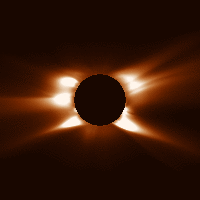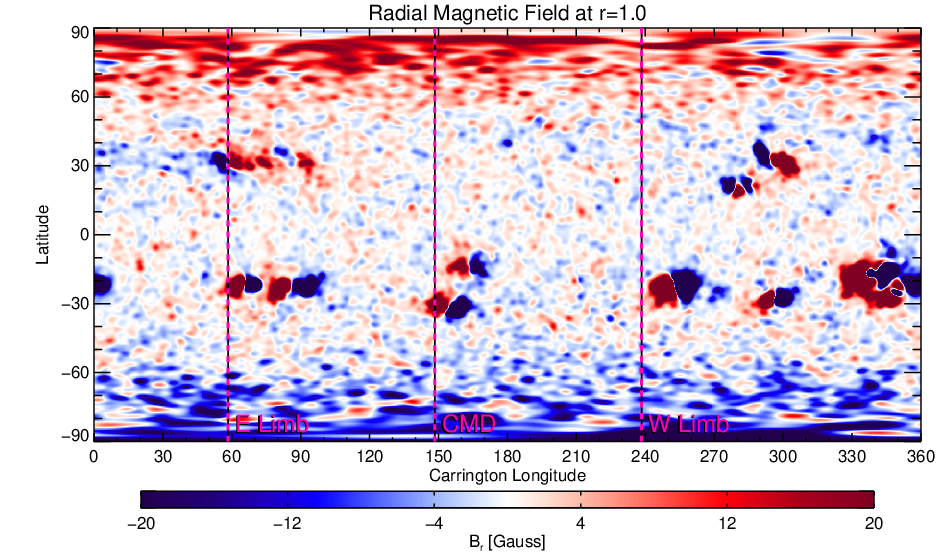The photospheric magnetic field maps we use for our calculations are built up from daily observations of the Sun during a solar rotation. These maps give a good approximation of the Sun's magnetic flux if the large-scale flux does not change much throughout a rotation.
The following figures show the evolution of the radial component (Br) of the solar photospheric magnetic field for approximately three Carrington rotations preceding the eclipse, as measured by the HMI magnetograph aboard NASA's SDO spacecraft. These maps show Br deduced from the measured line-of-sight component of the photospheric field as a function of sine-latitude and Carrington longitude. Red shows magnetic field directed out of the Sun; blue shows magnetic field directed into the Sun.
For our final eclipse prediction we used the data in this last image, which is a combination of a synoptic map of Carrington rotation 2237 (longitudes 0 to 276 degrees), data from the "Near Real Time" synoptic map of Carrington rotation 2238 (longitudes from 336 to 360 degrees), and data from the "Near Real Time" "Daily Synframe" which includes measurements made east of disk-center on the final day (longitudes from 276 to 336 degrees). These correspond to data measured from November 1, 2020 up to November 29, 2020 at 12:00UT.
As illustrated on our polar fields page, the data in the polar regions was filled with random concentrations of flux, with properties similar to those in the measured high-latitude fields, and with the net flux matching values from past time periods during which the solar poles were visible. The magnetic field that was used in our MHD calculation for the final prediction is shown in the image below. We multiplied the Br inferred from HMI by the factor of 1.4 to account for the difference in magnetic field strengths measured by the MDI magnetograph on SOHO and HMI (Y. Liu et al., 2012), since several of our previous eclipse predictions used MDI data, and our model parameters were benchmarked to MDI data.

 Evolution of the Photospheric Magnetic Field
Evolution of the Photospheric Magnetic Field



